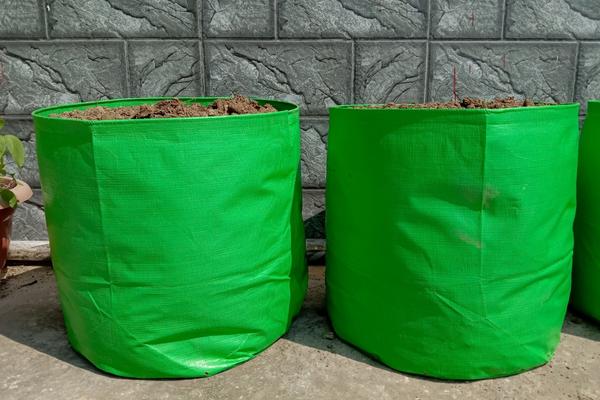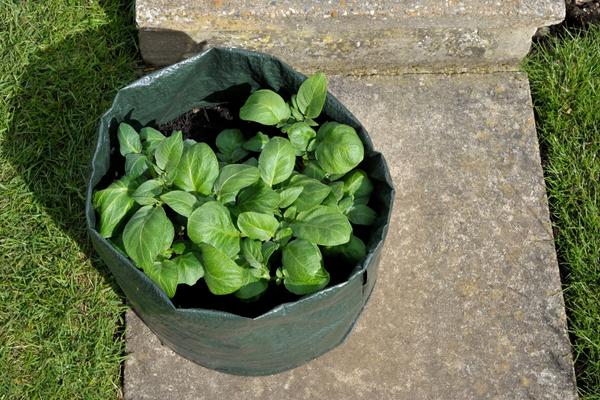Since you’re familiar with the concept of Grow Bag gardening, you should know the grow bag gardening: pros and cons
Otherwise, you won’t be able to make the best use of your bags. Growing roots inside grow bags are “air-pruned” as they reach their porous sides, causing them to branch out rather than grow in a circle as they would in pots. As a result, unlike plants in hard pots, plants in bags won’t get root-bound.
Grow Bag Gardening: Pros and Cons
Every Coin has two sides. It’s applicable in this case too. Grow Bag Gardening: Pros and Cons knowledge is the first thing you will need before starting gardening in this method
Pros of using Grow Bags

Root systems of plants in grow bags are more robust
The practice of “air pruning” is a significant advantage of grow bags. Plants in grow bags with air pruning have healthier root systems.
Roots will expand in conventional pots until they “strike the wall” (reach the edge of the pot). They then spin to continue growing into the soil. The roots eventually wrap themselves completely around the pot’s interior edge. The plant is termed to be “root bound” at that time because they are unable to move elsewhere.
Grow bags do not have this “root bound” effect. Grow bags do not have this “root bound” effect. Instead, because the bag is breathable, the roots make contact with the air as they hit the edge of the bag.
The root stops growing as a result of this air contact. Later, the plant’s new roots start to grow. This “air pruning” encourages the growth of numerous tiny roots on a grows bag plant. Additionally, it makes it simpler to later transfer or switch to a larger grow bag.
Better Soil Aeration
Grow bags allow more soil to contact the air than conventional pots since they are permeable. It is simpler for your plants to absorb nutrients from the soil when there is better aeration since compaction is prevented. Grow sacks help excess heat to dissipate on warm days since they are permeable. This indicates that if you leave your plants in the sun, they are less prone to overheat.
Finally, increased air in the soil allows water to permeate it more readily. This facilitates even watering to keep plants hydrated (rather than some soil that is too dry and some that are too wet).
Planting Grow bags on ground
Some grow bags are biodegradable, allowing you to bury them alongside your plants and watch them decompose.
Grow bags have the additional benefit of allowing you to start indoor plant growth earlier in the year. This is especially useful if you reside in a region with a brief growing season and a chilly temperature. In the winter, you can start seeds or seedlings indoors using grow bags. Use grow lights or put the bags next to windows if the days are short to provide light.
You can move the grow bag outside once it’s warm enough to do so without uprooting the roots. As a result, a frequent cause of injury and death for transplanted plants is eliminated.
Easy Usage and Storage
There are handles on many grow bags, but if not, you can attach your own! Because of this, they are lighter than conventional pots (especially larger pots that get heavy when they are full of soil.)
For both indoor and outdoor use, grow bags with handles make it simpler to suspend them from a rope or chain. When the growing season is done, grow bags can be easily stored because they fold flat (even if you have a lot of them).
Better Soil Drainage
A grow bag’s water permeability enhances drainage by enabling extra water to flow out the bottom of the bag. Additionally, because more soil is in contact with the air when using grow bags, more water evaporates. This indicates that using grow bags for your plants will make it simpler to avoid overwatering.
Read Also: Gardening with B. J. Geo-Textile Grow Bags
Cons of using Grow Bags
Drainage with Grow Bags
Numerous grow bags will tout their porous fabric, which lets water leak out of the bottom and sides. On the one hand, this could appear to be a benefit since proper drainage is essential for container gardening. However, permeable containers like grow bags also have their drawbacks. It’s unlikely that the dense fabric will allow water to drain fast during times of heavy rains. Your useful bags have suddenly turned into muddy buckets.
It is advised to add a few drainage holes to the grow bag’s bottom and to leave an inch around the sides of the bag’s bottom. You can prevent your container from having standing water by doing this. Even during routine watering, water will pass through the bag more quickly as a result.
Tough to Clean
Grow bags are constructed by layering plastic or natural fibers and sewing them together. It can be challenging to clean these layers after usage since the seams between them can collect moisture and grime. In addition, fungi and bacteria can easily hide in any crevices that are formed by fibers overlapping and entwining with one another.
It’s better to just toss your bag and start over with a fresh one if you find any mold or mildew on it. Grow bags cannot be attacked with a hose or pressure washer as a typical container can. Even if you want to clean the bag by hand, it’s unlikely that you will be able to get to every area where mold or disease might be hiding.
Insulating Problems
Grow bags don’t offer the same level of insulation as conventional containers because of their porous nature. Getting frost on your roots, however? It is too much for the majority of regular garden crops.
On the other hand, a black grow bag can become quite hot in warmer locations with strong sunlight and heat, making it difficult to keep moisture in the soil. Grow bags can form a hard crust when they dry out, which can clog the soil and obstruct the flow of water.
Not appealing to the eyes
Some individuals garden not just to feed themselves and their families, but also to enjoy the splendor of the natural world. Grow bags are probably not for you if you’re a gardener who values aesthetics or prefers to employ plants more ornamentally.
The majority of grow bags available are only offered in black. They frequently lack any kind of structure or ornamentation. This is so that grow bags can be as practical and affordable as possible, which is how most manufacturers make them.
Grow bags don’t last long
Grow bag proponents frequently assert that they are a fantastic substitute for plastic containers. It’s understandable why grow bags seem to be a more environmentally friendly choice, presuming they are constructed of natural fibers or eco-friendly materials. Compared to plastic containers, grow bags are not nearly as durable.
Fabric constructed of natural fibers is intended to eventually disintegrate. Additionally, it is prone to puncturing and ripping. Depending on the kind and materials used, the number of seasons you may get out of one grow bag varies significantly.
Nevertheless, more robust grow bags are available composed of plastic and synthetic materials. However, that violates the idea of being a more environmentally friendly container than plastic and beats grow bags in the debate of grow bags vs plastic pots.
Conclusion
In Bangladesh and other countries, grow bags are getting more popular day by day because they’re eco-friendly. People are now curious to know Grow Bag Gardening: Pros and Cons.
As people are becoming environmentally conscious. Thus, the choice is yours. Which gardening method will you choose?


